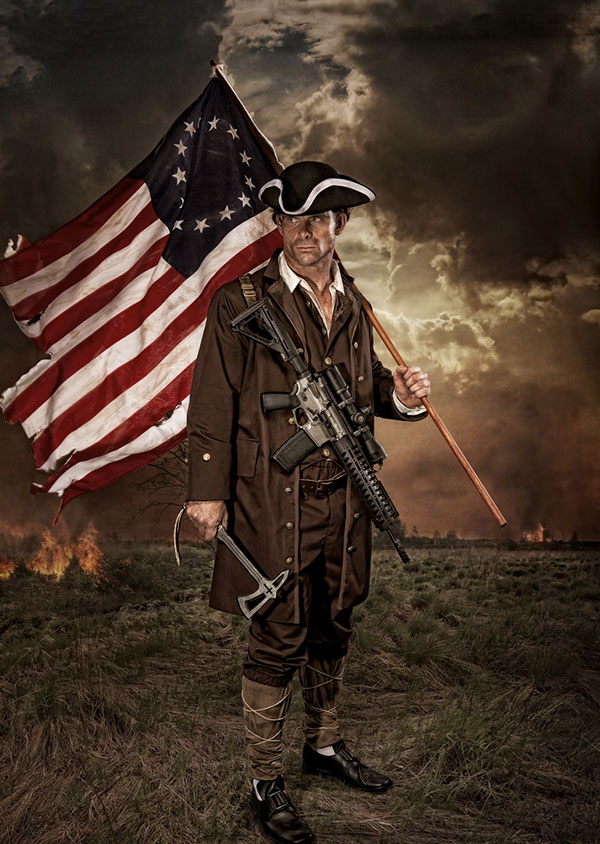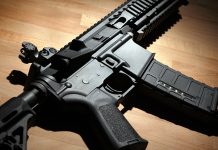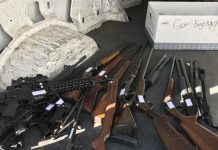
If you’re unfamiliar with the capability of a flintlock rifle, which was a common arm employed by American militiamen in the Revolutionary War, Flannel Daddy’s video above is a fantastic intro. The founding fathers understood its capabilities, and that it had advantages over the smoothbore muskets the British Army employed, particularly in the accuracy department. To wit: The founding fathers enthusiastically employed better, more capable, privately owned guns than were the military standard of the day.
Addressing the argument we’re dancing around, if you’re unfamiliar with it, bless you and your sheltered life: Anti-gunners will often propose banning any gun that wasn’t known by/available to the founding fathers. Ignoring the obvious absurdity of the argument that the inalienable rights written down by the founding fathers only extend to the technology available at the time (otherwise the internet, telephones, fax machines, and ballpoint pens would not be covered by the 1A), let’s take a look at this commonplace argument and how to counter it when encountered in the wild. AR-15’s certainly didn’t exist in the 18th century, but that point alone does not actually mean anything, particularly when considering the context of the era the founding fathers lived and wrote the Bill of Rights in.
First of all, the Continental Army grew from citizen militias which were as old as the colonies themselves. Most colonies required all able-bodied (usually those capable of strenuous physical activity, aged 16-60) men to keep, and be ready to bear arms in action with little notice. They were mustered periodically to practice functioning as a paramilitary unit, and were often the primary line of defense against native raiders. They were considered a local extension of the British Army, and were expected to have arms of modern military quality. After all, they were often deployed alongside the army (the most modern and powerful one in the world, at that), and needed to be similarly capable and equipped. The founding fathers knew this, many viscerally as they had been members of, or fought alongside the colonial militias in the British Army.
By the time of the “Boston Crisis” of 1774, American militias had over a century of combat experience. Particularly in New England, militias had by then developed a specialized branch of younger (typically <25y/o), enthusiastic, reliable, and more highly trained men, with arms supplied by the government, who were expected arm up and turn out with “a minute’s notice”. They were hand picked by regular militia commanders, essentially the first specialized American elite military unit, appropriately named “Minutemen”. By the American Revolution, they accounted for about a quarter of the New England militia’s roster, and were among the first to fight. Does this sound like a force that would turn down an AR-15 if you handed them one? We don’t think so, and we suspect the founding fathers wouldn’t either.
The militia, and the Minutemen in particular, employed tactics considered “ungentlemanly” by the standards of warfare of the day. Anything besides moving over open terrain in massed formations was considered terrorism, and the American irregular forces that made up the bulk of the early American revolutionary military took great pains to employ those “terroristic” tactics. The greater range and accuracy of their rifles meant that they did not need to fire in massed volleys to hit the enemy, and could even target NCOs and officers to disrupt their more numerous, and often better trained foe.
It should also be noted that especially early on, there were no government stores of small arms, artillery, or warships. Significant portions of the Continental Navy were converted merchant ships, armed with privately purchased and owned cannons, commissioned as privateers. The same goes for the cannons and small arms used by the Army.
Lastly, repeating arms absolutely existed during the founding fathers’ day. From the Puckle Gun (which makes an AR-15 look like a .22), to the pepperbox pistol, and the 22-shot Girardoni Air Rifle, capable of bringing down large game.
So to bury this argument once and for all, let’s take a look at what history has to say about what the founding fathers would have thought of an AR-15, shall we? We have:
-A nation at war with privately owned arms of all kinds, from swords and pistols to cannons and warships.
-A preference for top-of-the-line rifled flintlocks that exceed the capabilities of the British Brown Bess musket.
-An understanding of repeating arms, and period employment of such by hunters, the Austrian Army, and even Thomas Jefferson himself.
-An appreciation for ingenuity, engineering, and leveraging every possible advantage over the enemy to achieve unlikely success, even if that makes some label them “terrorists”.
We think you’re capable of looking at the above and coming to your own conclusion, but if nothing else, keep all this in mind the next time you find yourself facing what may be a well-intentioned argument, however poorly supported by observable history it may be.



